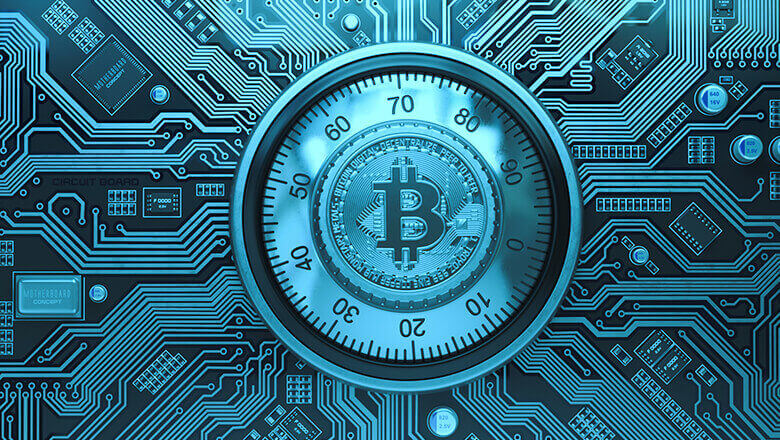Top 30 States with Foreclosures in February 2021
Despite the economic fallout and job loss from the pandemic, the number of US properties with foreclosure filings in February was 11,281, down 77% from last year, according to ATTOM Data Solutions . This is likely thanks to the COVID-19 foreclosure moratorium for federally guaranteed mortgages, which has been extended to June 30, 2021. (Note: President Joe Biden’s executive order also extended the mortgage payment forbearance enrollment window to June 30, 2021.)
While foreclosures were down for the month compared to last year, they were up compared to the previous month: specifically, foreclosures in February were up 16% compared to January. Read on for the top 30 states with foreclosures in February 2021—plus top counties within those states.
States with the Highest Foreclosure Rates: 1 -10
The top 10 states are not located in any one region. That said, the South had five states in the top 10: Delaware, Florida, Louisiana, South Carolina, and Georgia. The Northeast had none.
1. Utah
With a total 1,087,112 housing units, Utah’s foreclosure rate was 1 in every 3,883 homes in February. The 31st most populated state in the country, the state saw a total 280 foreclosure filings (default notices, scheduled auctions, and bank repossessions). The counties with the most foreclosures per housing unit were (in descending order): Utah, Ulintah, Beaver, Juab and Carbon.
2. Delaware
With a total 433,195 housing units, Delaware’s foreclosure rate was 1 in every 5,219 homes. Ranking 45th for population, the state had 83 foreclosure filings in February. The counties with the most foreclosures per housing unit were (in descending order): Kent, Sussex, and New Castle.
3. Florida
The third most populated state, Florida was also third for most foreclosures. Of its 9,448,159 homes, 1,516 went into foreclosure–making the state’s foreclosure rate 1 in every 6,232. The counties with the most foreclosures per housing unit were (in descending order): Highlands, Levy, Hendry, Madison and Taylor.
4. Illinois
With a total housing unit count of 5,360,315, Illinois had 846 homes go into foreclosure, resulting in the state’s foreclosure rate of 1 in every 6,336. The counties with the most foreclosures per housing unit were (in descending order): Power, Boundary, Fremont, Payette, and Bannock.
5. Louisiana
With the 25th largest population in the country, Louisiana’s foreclosure rate of 1 in every 7,923 homes put it in the number five spot. Of its total 2,059,918 housing units, 260 went into foreclosure. The counties with the most foreclosures per housing unit were (in descending order): Washington, West Baton Rouge, Caddo, Jackson, and Union.
Recommended: Tips on Buying a Foreclosed Home
6. Indiana
With a total 2,886,548 housing units in the state, Indiana’s foreclosure rate was 1 in every 7,930 homes. Ranked the 17th most populated, the state ranked 6th for foreclosures with a total 364 filings. The counties with the most foreclosures per housing unit were (in descending order): Vermillion, Clinton, Jasper, Fountain, and Huntington.
7. Ohio
Just like Florida, Ohio’s population ranking (7th) matches its foreclosure rate ranking. With 1 in every 8,310 households going into foreclosure, the state had 626 homes of a total 5,202,304 go into foreclosure. The counties with the most foreclosures per housing unit were (in descending order): Lake, Fairfield, Trumbull, Marion, and Cuyahoga.
8. South Carolina
With 1 in every 8,565 homes going into foreclosure, South Carolina was a close eighth to Ohio. Ranked 23rd for population, South Carolina has 2,286,826 housing units and saw 267 foreclosure filings. The counties with the most foreclosures per housing unit were (in descending order): Mccormick, Allendale, Fairfield, Darlington, and Bamberg.
9. Wyoming
Though it’s the least populated state in the country, Wyoming ranks 9th for foreclosures with 1 in every 8,651 homes. Of its 276,846 homes, 32 homes were foreclosed on. The counties with the most foreclosures per housing unit were (in descending order): Weston, Carbon, Uinta, Campbell, and Lincoln.
10. Georgia
Eighth for most populated state, Georgia was tenth for most foreclosures. It has 4,283,477 housing units, of which 472 went into foreclosure—making the state’s foreclosure rate 1 in every 9,075 households. The counties with the most foreclosures per housing unit were (in descending order): Berrien, Baker, Terrell, Oglethorpe, and Candler.
States with the Highest Foreclosure Rates: 11 – 20
With the next group of states, the trend of the South (North Carolina, Missouri, Oklahoma, Alabama, and Mississippi) dominating foreclosure rates continues. The Northeast appears with Maine and New Jersey and the West Coast debuts with California.
11. Maine
Ranked as the 9th least populated state, Maine saw a total 81 foreclosures in February. With a total 742,788 housing units, its foreclosure rate was 1 in every 9,170 homes. The counties with the most foreclosures per housing unit were (in descending order): Oxford, Penobscot, Franklin, Waldo, and Somerset.
12. California
The most populated state is only 12th for foreclosures. Of its 14,175,976 homes, 1,427 went into foreclosure, making for a foreclosure rate of 1 in every 9,934 homes. The counties with the most foreclosures per housing unit were (in descending order): Calaveras, Sutter, Trinity, Kern, and Butte.
13. North Carolina
The 9th most populated state has 4,627,089 homes, of which 462 homes went into foreclosure. That makes the state’s foreclosure rate 1 in every 10,015 homes. The counties with the most foreclosures per housing unit were (in descending order): Hyde, Anson, Lenoir, Onslow, and Bertie.
14. Missouri
Of Missouri’s 2,790,397 housing units, 265 homes went into foreclosure in February. The 18th most populated state’s foreclosure rate is 1 in every 10,530 households. The counties with the most foreclosures per housing unit were (in descending order): Moniteau, Pike, Montgomery, Greene, and Adair.
Recommended: What Is a Short Sale?
15. Iowa
The 30th most populated state, Iowa is 15th for most foreclosures. Of its 1,397,087 homes, 128 were foreclosed on. That puts the state’s foreclosure rate at 1 in every 10,915 households. The counties with the most foreclosures per housing unit were (in descending order): Guthrie, Wayne, Hamilton, Davis, and Adair.
16. Oklahoma
With 154 of its 1,731,632 homes going into foreclosure, Oklahoma’s foreclosure rate is 1 in every 11,244 households. In the 28th most populated state, the counties with the most foreclosures per housing unit were (in descending order): Roger Mills, Pawnee, Pontotoc, Muskogee, and Choctaw.
17. Alabama
Ranked 24th for most populated, Alabama was 17th for foreclosures. Of its 2,255,026 homes, 198 went into foreclosure, making for a foreclosure rate of 1 in every 11,389 homes. The counties with the most foreclosures per housing unit were (in descending order): Marshall, Jefferson, Coffee, Autauga, and Shelby.
18. New Jersey
New Jersey has a total of 3,616,614 housing units and 317 homes are in foreclosure. While it’s ranked 11th most populated state, its foreclosure rate of 1 in every 11,409 homes puts it in 18th place. The counties with the most foreclosures per housing unit were (in descending order): Salem, Atlantic, Sussex, Gloucester, and Cumberland.
19. Alaska
The third least populated state, Alaska has 314,670 homes, of which 26 went into foreclosure in February. That means its foreclosure rate is 1 in every 12,103 homes. The counties with the most foreclosures per housing unit were (in descending order): Matanuska-Susitna, Anchorage, Fairbanks North Star, Juneau, and Kenai Peninsula.
20. Mississippi
In the number 20 spot for most foreclosures,Mississippi ranks as 33rd for most populated–and has 1,322,808 homes. A total 107 went into foreclosure in February, making the state’s foreclosure rate 1 in every 12,363 households. The counties with the most foreclosures per housing unit were (in descending order): Scott, Simpson, Lawrence, Bolivar, and Pike.
States with the Highest Foreclosure Rates: 21 – 30
The remaining states (21 to 30) in our rankings of the highest foreclosure rates are mainly located in the Northeast: New Hampshire, Massachusetts, Connecticut, and Pennsylvania. The Midwest and Southwest were tied with two states each: Wisconsin and Nebraska and Texas and Arizona.
21. Connecticut
With housing units totaling 1,516,629, Connecticut saw 116 homes go into foreclosure. That puts the 29th most populated state in 21st place, with a foreclosure rate of 1 in every 13,074 homes. The counties with the most foreclosures per housing unit were (in descending order): Windham, Litchfield, Tolland, Hartford, and Middlesex.
22. Arizona
Though ranked as the 14th most populated state, Arizona’s total 228 foreclosures (out of 3,003,286 total housing units) puts it in 22nd place for most foreclosures. The state’s foreclosure rate is 1 in every 13,172 households. The counties with the most foreclosures per housing unit were (in descending order): Apache, Mohave, Pima, Santa Cruz, and Pinal.
23. Pennsylvania
With a total 5,693,314 housing units, Pennsylvania saw 421 homes go into foreclosure. That puts the foreclosure rate for the 5th most populated state at 1 in every 13,523 households. The counties with the most foreclosures per housing unit were (in descending order): Philadelphia, Lycoming, Cambria, Luzerne, and Wyoming.
24. Maryland
The 19th most populated state ranks 24th for foreclosures. Of its 2,448,422 housing units, 170 went into foreclosure, making for a foreclosure rate of 1 in every 14,402 homes. The counties with the most foreclosures per housing unit were (in descending order): Somerset, Allegany, Prince George’s County, Caroline, and Baltimore City.
25. Wisconsin
In Wisconsin, the 20th most populated state, there were 179 foreclosures (out of 2,694,527 housing units.) That puts its foreclosure rate at 1 in every 15,053 homes. The counties with the most foreclosures per housing unit were (in descending order): Florence, Ashland, Langlade, Vernon, and Grant.
26. Massachusetts
Ranked 15th for most populated, Massachusetts came in as 26th for foreclosures. With 2,897,259 housing units and 172 homes in foreclosure, the state’s foreclosure rate was 1 in every 16,845 households. The counties with the most foreclosures per housing unit were (in descending order): Hampden, Franklin, Berkshire, Worcester, and Barnstable.
Recommended: Home Buying 101: How Much House You Can Afford
27. Texas
The second most populated state was 27th for foreclosures. Of 10,937,026 homes, 636 went into foreclosure, making for a foreclosure rate of 1 in every 17,197 households. The counties with the most foreclosures per housing unit were (in descending order): Liberty, Atascosa, Franklin, Mills, and Mcculloch.
28. New Hampshire
New Hampshire’s total number of foreclosures was only in the double digits: 35. But in a state with the 10th smallest population (and 634,726 housing units), that number put it in the 28th spot for foreclosures, making for a foreclosure rate of 1 in every 18,135 households. The counties with the most foreclosures per housing unit were (in descending order): Cheshire, Sullivan, Merrimack, Belknap, and Strafford.
29. Nebraska
With 46 of a total 837,476 housing units in foreclosure, Nebraska’s total number is also in the double digits. But with a foreclosure rate of 1 in every 18,206 households, the 14th least populated state holds 29th for foreclosures.. The counties with the most foreclosures per housing unit were (in descending order): Cuming, Nemaha, Red Willow, Scotts Bluff, and Antelope.
30. Virginia
Last but not least, Virginia saw 192 homes go into foreclosure in February. That nabbed the 12th most populated state the 30th spot on our list. With 3,514,032 total housing units, the state’s foreclosure rate was 1 in every 18,302 households. The counties with the most foreclosures per housing unit were (in descending order): Emporia City, Norton City, Nottoway, King William, and Lancaster.
The Takeaway
Of the top 20 states with the highest foreclosure rates, half were in the South: Delaware, Florida, Louisiana, South Carolina, Georgia, North Carolina, Missouri, Oklahoma, Alabama, and Mississippi. Of the top 30 states, Florida had the most number of foreclosures (1,516) and Alaska had the least (26).
Looking to buy a home? SoFi offers competitive rates, exclusive member discounts, and guidance from mortgage loan officers and member specialists.
SoFi Loan Products
SoFi loans are originated by SoFi Bank, N.A., NMLS #696891 (Member FDIC). For additional product-specific legal and licensing information, see SoFi.com/legal. Equal Housing Lender.
SoFi Mortgages
Terms, conditions, and state restrictions apply. Not all products are available in all states. See SoFi.com/eligibility for more information.
External Websites: The information and analysis provided through hyperlinks to third-party websites, while believed to be accurate, cannot be guaranteed by SoFi. Links are provided for informational purposes and should not be viewed as an endorsement.
SOMN21027




